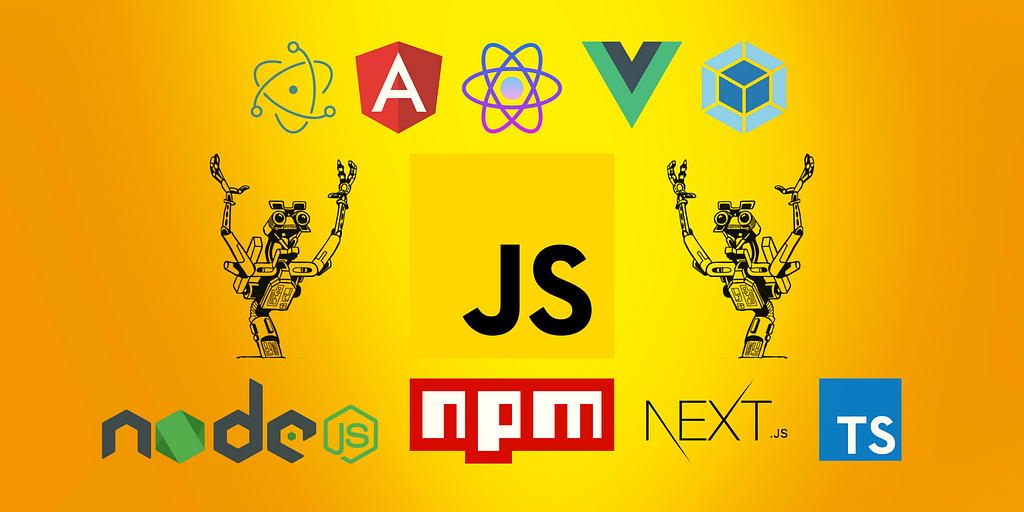
Welcome, fellow adventurers, to the enchanting world of JavaScript! 🎉
As you embark on your coding journey, understanding the fundamental building blocks of any programming language is essential. In this comprehensive and beginner-friendly guide, we’ll unravel the mysteries of data types in JavaScript.
From primitive data types like numbers, booleans, strings, null, undefined, symbols, and BigInt, to exploring exponential notation and the mighty typeof operator, we’ll equip you with the tools to wield JavaScript’s magic. We’ll also delve into advanced data types, or as they are often called, “data structures,” such as arrays, objects, maps, and more.
So, fasten your seatbelts, embrace the wonders of JavaScript, and let the coding adventure begin! 💫
Primitive Data Types: Unveiling the Essentials 🏗️
1. Numbers:
Numbers are the building blocks of mathematical operations and calculations.
let age = 42;
let pi = 3.14;
2. Boolean:
Booleans have two values: true or false, guiding the flow of your program.
let isCodingFun = true;
let isCodingChallenging = false;
3. Strings:
Strings empower you to work with textual data, allowing communication, message display, and text manipulation.
let name = "JavaScript";
let greeting = 'Hello, world!';
4. Null:
Null signifies the intentional absence of a value.
let emptyBox = null;
5. Undefined:
Undefined occurs when a variable is declared but not assigned a value.
let country; // undefined
6. Symbol:
Symbols are unique and immutable values used as special identifiers, often creating unique property keys.
const id = Symbol('id');
const user = {
[id]: 'abc123',
name: 'John Doe'
};
7. BigInt:
BigInt is used when dealing with truly massive numbers beyond the limits of regular numbers, allowing precise arithmetic operations.
const bigNumber = 123456789012345678901234567890n;
console.log(bigNumber); // Output: 123456789012345678901234567890n
Exponential Notation: Embracing the Power of Scale ✨
JavaScript allows expressing numbers using exponential notation, making it easy to represent extremely large or small values.
const million = 1e6; // 1,000,000
const billionth = 1e-9; // 0.000000001
typeof Operator: Peering into the Unknown 🎭
The typeof operator helps understand the nature of variables, unveiling the true identity of data types.
const age = 42;
console.log(typeof age); // Output: "number"
const name = "JavaScript";
console.log(typeof name); // Output: "string"
const isCodingFun = true;
console.log(typeof isCodingFun); // Output: "boolean"
Advanced-Data Types as Data Structures: Unleashing the Power 💪
- Arrays:
Arrays are versatile and powerful data structures that hold multiple values, allowing efficient storage and access to elements.
const fruits = ['apple', 'banana', 'orange'];
console.log(fruits[0]); // Output: "apple"
2. Objects:
Objects represent real-world entities and store collections of key-value pairs, modelling complex relationships.
const person = {
name: 'Alice',
age: 25,
isStudent: true
};
console.log(person.name); // Output: "Alice"
3. Maps:
Maps provide an advanced way of organizing data by associating keys with values, offering flexibility and efficient key-value pair retrieval.
const userMap = new Map();
userMap.set('name', 'John');
userMap.set('age', 30);
console.log(userMap.get('name')); // Output: "John"
Data Structures — Empowering Your Code 🏰
In JavaScript, advanced data types such as arrays, objects, and maps can also be referred to as data structures. These structures empower you to organize and manipulate more complex information efficiently.
Conclusion: Embrace the Magic of JavaScript Data Types! 🌈
Congratulations, brave coding adventurer! You’ve now journeyed through the captivating landscape of JavaScript data types. We explored primitive data types, including numbers, booleans, strings, null, undefined, symbols, and BigInt. We also delved into exponential notation, peered into the unknown with the typeof operator, and unleashed the power of advanced data types or data structures, including arrays, objects, and maps.
Armed with this newfound knowledge, you’re ready to wield the magic of JavaScript and create wonders with your code! Understanding data types is crucial for crafting robust applications, and this is just the beginning of your coding odyssey. So, keep exploring, experimenting, and let your creativity soar high in the boundless realms of JavaScript!
May your code be enchanting, and your journey ever-thrilling! Happy coding! 🚀
Who Am I?
I’m Aswin Barath, a Software Engineering Nerd who loves building Web Applications, now sharing my knowledge through Blogging during the busy time of my freelancing work life. Here’s the link to all of my craziness categorized by platforms under one place: https://linktr.ee/AswinBarath
Join me to learn JavaScript!
Checkout the TechSoftware Feature Page where my mission is to share my knowledge on JavaScript: https://medium.com/techsoftware/javascript/home
Learn what I know about JavaScript from any of my favourite knowledge sources:
- Mozilla Developer Network (MDN): JavaScript Data Types and Structures
- W3Schools: JavaScript Data Types
- JavaScript.info: Data Types
- Complete Web Developer Course
- Junior to Senior Developer Course
- Top 5 JavaScript Courses on Udemy
- JavaScript Roadmap — The Basics: Event Recording
Thank you so much for reading my blog🙂.
Mastering JavaScript Data Types: Unveiling the Magic! ✨ was originally published in TechSoftware on Medium, where people are continuing the conversation by highlighting and responding to this story.





